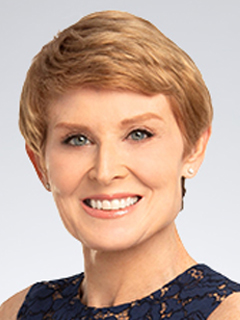Consumers spend ahead of more tariffs
Tariff induced price gains are still ahead.

September 26, 2025
Personal disposable incomes rose 0.1% after adjusting for inflation in August, a slowdown from the 0.2% pace of July. Transfer payments buoyed gains, as younger baby boomers scrambled to tap benefits early for fear of losing them. Personal incomes less transfer payments were essentially flat.
Personal consumption expenditures rose 0.4% in August after adjusting for inflation, the same as July. Gains were broader based in August, with spending on services picking up with spending on goods. Travel and tourism got a lift from affluent households sustaining gains, while vehicle sales fell after adjusting for inflation. Spending at grocery stores was essentially flat for the month.
The noticeable outlier is spending on groceries, which essentially flat for the month. Recent work by Moody's Analytics reveals that the top 20% of households are driving spending gains, while the bottom 80% have stagnated after adjusting for inflation. The income and wealth inequalities are currently the worst since the late 1970s and 1980s, respectively according to the nonpartisan congressional budget office. Other measures suggest that they are much worse than that.
The gains came despite souring consumer attitudes on the prices and the job market. Tariffs are a regressive tax and hit low-and middle-income households harder than high-income households as they buy more imported goods. Anything that derails confidence in the most affluent of households could tip the apple cart on the economy.
Markets have rebounded on the news, while bond yields moved down. However, bond yields are already much higher than they were in the weeks leading up to the Federal Reserve’s rate cut in September, much like we saw a year ago. That underscores how limited the Fed's control over rates are in a world with high tariffs and ballooning federal deficits. Gold prices continue to soar on inflation fears.
The saving rate fell to 4.6% in August, its lowest pace since December 2024. Last December was distorted by the late start of the holiday season last year. Thanksgiving was in the last week of November 2024. The saving rate by affluent households moved up earlier in the year. The saving rate for the rest of households has dwindled to next to nothing. COVID-era stimulus is long spent, and credit delinquencies are rising. Delinquencies on student debt and home equity lines of credit are now above pre-pandemic norms.
Bulk of tariff-induced price gains ahead
The personal consumption expenditure (PCE) price index rose 0.3% in August, in line with expectations. That translates to a 2.7% increase from a year ago, up a tick from July and the hottest since February. If the data is taken out to two decimal places, the hottest since April 2024. A jump in prices at the grocery stores and the gas pump fueled those gains. Those categories are the most politically fraught as they are necessities.
Core PCE rose only 0.2%. That translates to a 2.9% increase from a year ago, the same as July. We were expecting tariffs to push the core PCE up above 3% by year-end. New tariff announcements could push that figure higher if they stick.
Durable goods prices fell 0.1% for the second consecutive month, with discounts on furniture, appliances and computers. Other durable goods prices jumped 2%, their fastest pace since 1991. Jewelry and watches, prescription eyeglasses, therapeutic medical equipment, vehicles and cell phones were all up. Cell phones rose in price for the first time since March. Motor vehicles parts and accessories were up 1.3%, the fastest pace since November 2023.
It can take 6-18 months for the full effects of tariffs to show up as a squeeze on margins and bump in prices. The front-running of tariffs with a surge in imports in the first quarter helped further blunt the initial blow of tariffs. The effects are nonlinear.
The Supreme Court will hear arguments on whether the emergency powers to levy tariffs were legal in January. If they rule with the lower courts, US firms could be eligible for refunds plus interest. Wall Street is betting they will. The administration has other levers it can pull and reinstate any tariff ruled illegal.
The super core services component of the index, which strips out shelter costs, rose 0.3% in August. That is the same monthly gain as July and translates to a 3.4% increase from a year ago. The annual increase is the fastest since February. Air fares and hotel room rates jumped sharply during the month. The increase in motor vehicles and repairs jumped 2.4%, its fastest monthly gain on record. The data dates to 1959. Costs of child and eldercare moved up as well.
Insurance costs were essentially flat, but another move up is expected. Healthcare is poised to rise at it fastest pace in fifteen years next year, while the effects of tariffs and last year’s natural disasters on repair and rebuilding costs for vehicles and homes are still ahead of us.
Service sector prices are about to feel the impact of tariffs if the most recent threats are realized in October. Healthcare costs are most vulnerable. That is in addition to the service sector inflation triggered by the spending power of affluent households. Travel and leisure costs are rising in response to those effects.
It can take 6-18 months for the full effects of tariffs to show up as a squeeze on margins and bump in prices.

Diane Swonk
KPMG Chief Economist
Bottom Line
Consumer spending picked up in July and August, as affluent households stepped up and out. The saving rate fell, and prices remained elevated. The bulk of the effects of tariffs on profit margins and prices are still ahead of us, complicating the Fed's job. Its dual mandate of fostering price stability and full employment is being stressed. Tariffs should represent a one-time bump in prices, but only if they occur all at once. We still expect the Fed to cut two more times this year, but the uncertainty surrounding those cuts is high given the strength of consumers spending, 7 of 19 participants at the meeting were done with cuts for the year.
Subscribe to insights from KPMG Economics
KPMG Economics distributes a wide selection of insight and analysis to help businesses make informed decisions.
Explore more

Consumer incomes and spending gain ground
Early signs of strain emerging in the labor market.

KPMG Economics
A source for unbiased economic intelligence to help improve strategic decision-making.

Birds of a feather no longer flock together
The Fed splits over timing & size of rate cuts.
Meet our team
